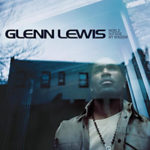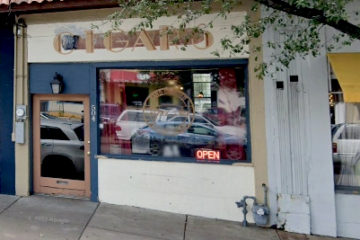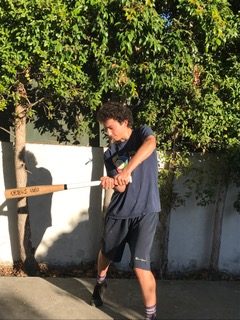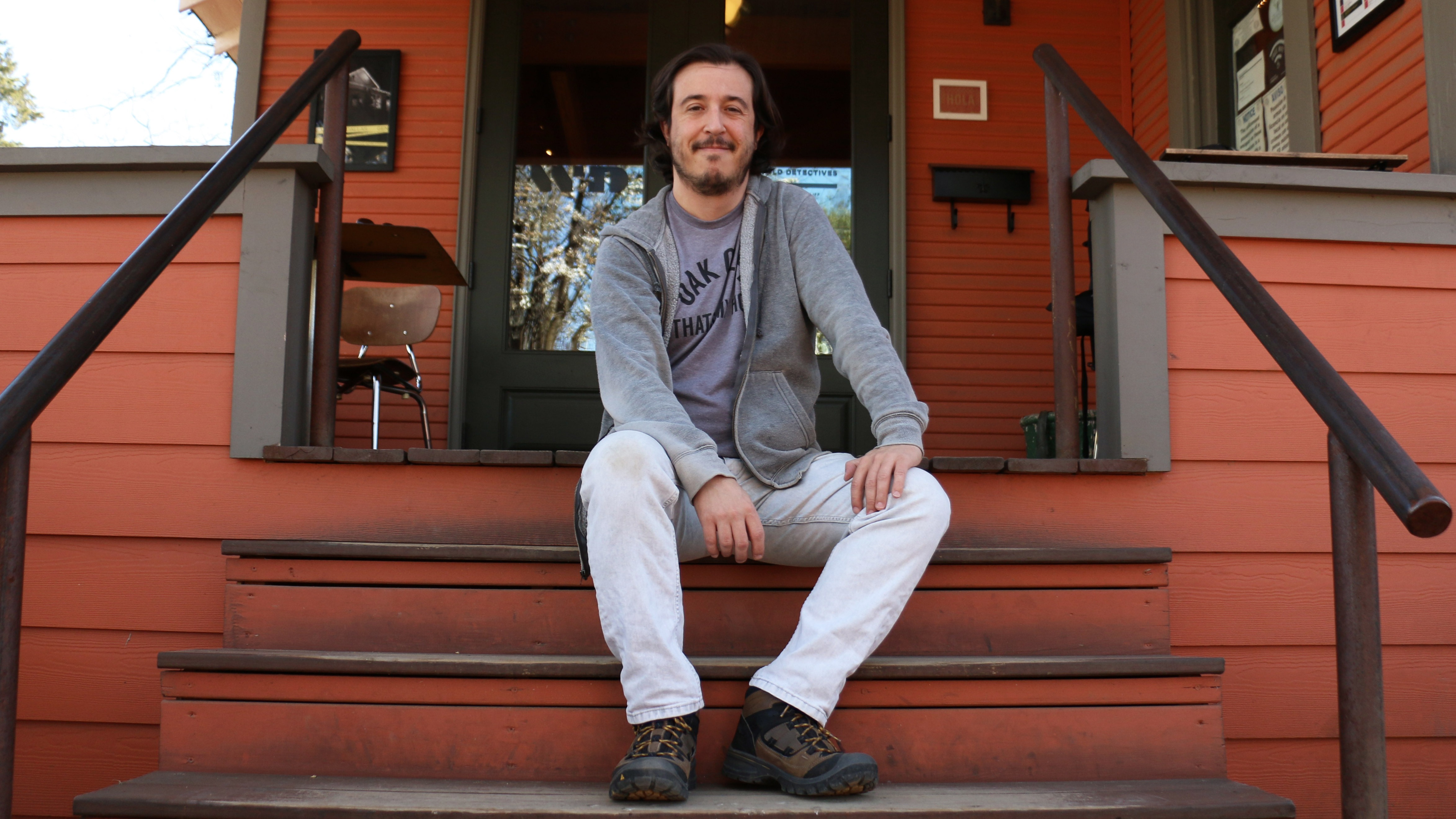Get More Info on La Vie Celeste Extra Rich Cream
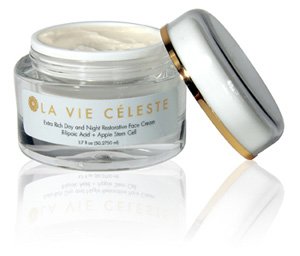 The other day I found an interview with Teri Dourmashkin, founder of La Vie Celeste over at truthinaging.com. I contacted Marta Wohrle at TruthInAging.com and she kindly granted me permission to post this interview with Teri Dourmashkin here at GotInterviews.com. The story of La Vie Celeste is an interesting one and I especially love how Teri decided upon a name. See the original interview here.
The other day I found an interview with Teri Dourmashkin, founder of La Vie Celeste over at truthinaging.com. I contacted Marta Wohrle at TruthInAging.com and she kindly granted me permission to post this interview with Teri Dourmashkin here at GotInterviews.com. The story of La Vie Celeste is an interesting one and I especially love how Teri decided upon a name. See the original interview here.

Fifteen years after the initial seed was planted for her skincare line, Dr. Teri Dourmashkin created La Vie Celeste, a brand dedicated to versatile, green yet luxurious products. I spoke to Teri in depth about some key ingredients that she features, her stance on the use of preservatives in cosmetics, and what the future holds for La Vie Celeste.
Where does the name La Vie Celeste come from?
The name means “heavenly life,” which I thought was beautiful. Originally, though, the line was called “Natural You.” Actually, I started with only the original face cream which was made in Australia. But people thought I needed a more upscale name. I love French; to me, it’s the most beautiful language in the world. But I didn’t want the name to sound pretentious. I came up with Lumiere Celeste (“heavenly light”), which was the brand’s name for two years. But one day I did a Google search of my company name and saw that Chanel had launched a product line of nail polishes and lip-glosses with the same name. I was just like, are you kidding me? I called a trademark lawyer and he offered to send a cease and desist order to Chanel, but I just laughed. I figured I didn’t need this right now, and that I would come up with a new name. For two weeks I thought and got opinions from people. I really wanted the name to have a beautiful, spiritual meaning. I finally came up with La Vie Celeste, and I had it trademarked.
What were you doing prior to La Vie Celeste? How did you make the transition to developing skincare products?
I’ve always had an interest in skincare, but about 15 years ago I actually started the process of developing a line. I ran into this woman who was also interested in starting a line, but we didn’t have the money to do it and we ended up parting ways. Later, I was in school getting a masters in Criminal Psychology, and after that I worked on my doctorate in Health Education and was thinking about ways to make money. So I was looking at stuff like do-it-yourself skincare but I knew I wanted something that I could bring into the retail market. I started reading about R lipoic acid, which is what we use in all the creams now. I wanted something safe, natural and simple. Personally, I don’t want an ingredient listing of 50 or more ingredients. And what bugged me about many natural skincare companies is their tendency to use a lot of essential oils in their products. Essential oils are great, but for people like me who have sensitive skin, it can be an issue. Some of them like peppermint and eucalyptus, which are supposed to cool the skin, cause a burning sensation on my skin. Even the strong scents of essential oils can put people off. Thyme, lavender…they can be too strong also. I didn’t want that. I envisioned a line that was beautiful and clean.
I started playing with a base cream; this was all new for me. I Googled “natural bases” because I didn’t want to use parabens. Finally, I found a small company in Australia that had a great, clean base. It did have oils like almond and sesame, which I was nervous about since I was oily, but the base was beautiful and penetrated right into the skin. I began blending the base with green tea, R lipoic acid and other antioxidants. People loved it, but there was a problem. I originally bought the R lipoic acid in capsule form from a Canadian company. I would sit down and break open capsules, pour the contents into the base, and mix it all together. It mixed well enough, but it was a little grainy. One day I opened up a capsule and saw that the contents were all sticky and glue-like. I found out that the R lipoic acid had polymerized, because this particular form was unstable. So I ended up starting over and found a new company that makes R lipoic acid that is stable for three years and won’t polymerize. Originally, R lipoic acid was used as an internal supplement only; its foray into cosmetic topical usage is newer. And while I wouldn’t suggest that you eat any of my creams, you can see how pure the R lipoic acid is; it can literally be ingested.
You credit R-Lipoic Acid in part for giving you more youthful skin. What exactly is R-Lipoic Acid and how does it affect skin? Is it more effective than Alpha Lipoic Acid?
According to research, there are two forms of lipoic acid: the natural R lipoic acid and the synthetic alpha lipoic acid, which is the form you typically see used in cosmetics. Technically, the alpha lipoic acid is actually a byproduct and though it does have antioxidant properties, R lipoic acid is superior, in my opinion. It is considered the natural form of lipoic acid because it mirrors what our bodies naturally produce. It is the only form that is capable of reducing inflammation. And inflammation, whether it leads to heart disease or puffy skin, is a major cause of aging. Even though R lipoic acid costs more than alpha lipoic acid does, it is twice as effective in terms of concentration, so a little goes a long way. I find that the blend of R lipoic acid and the other great ingredients in La Vie Celeste products create a very synergistic effect.
What other ingredients do you see as essential to anti-aging other than R-Lipoic Acid?
Green tea, spirulina pomegranate, olive leave extract, and hyaluronic acid are all great when used at the right concentrations. By looking at an ingredient panel, we can get a good idea of the quantity of each listed ingredient since it is in descending order. But sometimes that can be deceptive. Even if you see an ingredient at the bottom of the list, it doesn’t mean it’s not in a high enough or effective concentration. Everything needs to be taken in context. For example, we use between .5 and 1 percent hyaluronic acid in our products, which is very effective, even though it is listed towards the bottom of the ingredients list. We also use a 1% concentration of R-Lipoic Acid which is also very effective.
You hold a Doctorate in Health Education from Columbia University and you are a certified Reiki master. Can you elaborate on how these qualifications have contributed to your skin care line?
Going through the rigorous process of getting my doctorate gave me a strong research background and a critical eye. I can critically analyze and research ingredients/information for my line, which is important. My dissertation was on women and chronic pain – not so much about the pain itself, but about its emotional toll. Going through that rigorous academic process has helped me to stay more focused. So, it has helped me to be a better businesswoman as well. And having a doctorate in Health Education dovetails so beautifully with La Vie Celeste, because it’s not only about providing great products, but also providing products that are safe and healthy to use. And my training in Reiki has heightened my intuition and spirituality even more. And I believe that tuning into your true “authentic” self can only help you become more successful in business.
What led you to develop an anti-aging skin care line as opposed to a more generalized skin care line?
I related most to an anti-aging line, so I created one. But La Vie Celeste is great for people of all ages; my husband’s daughter, who is 22 years old, loves the line. In fact, she finds the toner moisturizing enough to use on its own without the cream in the summer.
My demographic is definitely 35 – 55 years old, but it extends below and beyond for sure. And today, people in their 20s are thinking long term. They want to preserve and protect their skin early. The line is good for men too, since it lacks a fragrance. Plus, I’ve been told that the cleanser works well as a shaving lotion.
Did you reach out to scientific authorities in order to develop the line, or have you mostly conducted independent research?
I always work with people who have a background in skincare, even if they’re not chemists. The formulator I worked with in Australia is one example. I usually do the research on an ingredient, and then send it over to people who have the expertise. I put a lot of ideas down on paper, but you never know how things will turn out in an actual product. There have been lots of trials and prototypes. Who ever thought that we could have a cleanser without soap or detergent? But we made it happen, the formulators and me; it’s a team effort. I used to literally mix things by hand myself, but as the company has grown the process has become more sophisticated.
Can you explain the philosophy behind La Vie Celeste? According to your website, it’s all about simplicity and “no false promises or hopes.”
I have a less is more philosophy; get in get out. You don’t have to throw every ingredient into a product but the kitchen sink. The more ingredients there are, the more chances there are of having a reaction or breakout, and the more difficult it is to find the culprit behind what’s causing the reaction.
I don’t make exaggerated claims. I’m on the up and up with the law and the FDA and what you can and can’t say when marketing a product. Lawyers have reviewed everything I’ve claimed on my product packaging. Technically, companies aren’t legally allowed to use the terms “anti-aging” or “rejuvenates” or “boosts collagen production.” Right now, they’re cracking down on companies for using the terms such as, “repairs skin’s DNA,” etc. Instead of using the term “anti aging,” I use “age defying,” on all of my packaging. I’m conservative in the claims I make. I have to say though I was stunned to learn that even the term “anti-aging” was not permissible on product packaging since it seems to be used by the majority of skin care companies.
How are you able to create your products without the use of preservatives or parabens? What other ingredients will you not find in La Vie Celeste products?
There’s so much misinformation about certain ingredients like preservatives. Some companies claim that they use essential oils to preserve their products, and if there isn’t water in them then maybe they really can get away with that. But according to research that I’ve come across, you’d need to use such a high quantity of essential oils in order to preserve a product, that it would be a harmfully high dose.
That being said, I don’t use parabens and I don’t need to. But I do think that they need to be re-examined. Recent research shows that in the small concentrations they are being used in for cosmetics, they are perfectly safe. Awhile back, a study in the UK reported that parabens were found in breast tissue of women that also had breast cancer. But there was no control group and no proof that parabens caused the cancer. Correlation doesn’t prove causation. But the hype that surrounded this study caused major companies to take parabens out of their products. All of the chemists I’ve spoken to are angry because they say that parabens are safe and effective, but now they are limited because companies don’t want to use them. But I understand that public perception is important. Still, I firmly believe that the dose makes the poison. We need to educate people and get the facts. If you don’t want preservatives in your products, then you have to be willing to put them in the refrigerator and use them within a week or two. Otherwise, they won’t be safe, particularly if water is used in the product.
For La Vie Celeste, we use Cosmocil CQ, a very gentle preservative that is often found in baby wipes, contact lens solution, and other natural skin care lines. We also use grapefruit seed extract, which is free of triclosan and other potentially harmful ingredients. Our products have passed the 28-day challenge test; high quantities of mold and bacteria were put into the products and they were exposed to high temperatures and other extreme conditions to see how well the preservative (s) hold up. All La Vie Celeste products have passed this test with flying colors.
What makes La Vie Celeste different from other brands?
Fragrance-free products are very hard to find, particularly in natural skin care, but La Vie Celeste offers them. The eye cream does have rose hydrosol, but it’s not as strong as a full strength essential oil. Everyone is different but it’s generally tolerated by sensitive skin. And I don’t claim fragrance-free on that particular product.
The versatility of the products also makes La Vie Celeste different. You can use the face cream around your eyes or use the toner to remove makeup. The facial cream is 3 creams rolled into one; your day cream, night cream, and your anti aging cream. I like simple things because I am lazy and don’t like taking the time to put on a million products. Plus, the versatility saves money.
The packaging of my products is also unique. I wanted a luxurious feel for a natural skincare line. Not that there’s anything wrong with it, but I didn’t want a “green” look. I admire it in other companies, but for me, I wanted beautiful elegant packaging with green ingredients inside — Natural beauty redefined.
What is your personal favorite La Vie Celeste product and why
If I’m forced to pick one, then the original face cream. It absorbs so beautifully and it’s good for all skin types. I love the matte finish and the results of a rosy glow and soft skin. But I love the cleanser too!
TIA readers are big fans of the glycolic mask and the day and night restorative face cream (which was included in the celebrity gift bags at the 2011 Golden Globes). What would you say the most popular La Vie Celeste skin care Product is?
It depends where you go. On TIA, the number one seller is the cleanser, without question, followed by the toner and then the exfoliator.On my website, though, the number one seller is the original cream.
What other skin care lines are you fond of?
I like really simple lines. I used to use some of Isomers products, way back before I started my own line. I also used to use one or 2 products by MyChelle. For sunscreen, I use Aubrey Organic Sunblock SPF 20. But primarily I use my own line.
What’s new for La Vie Celeste? Any new product launches that we can look forward to?
I started working with a new green chemist out in California. We have several new prototypes in the works. They are basically tweaks on the original products. First, I’m keeping the cleanser as is, but I’m changing the color to a prettier light peachy pink. Second, I’ve added ChroNoline, a tetra peptide 3 to the Extra Rich Cream. As we age, the skin becomes thinner and the dermal epidermal juncture (DEJ) becomes thinner. When you’re younger, it has more of a wave-like pattern. As we age, it becomes flatter. This peptide is said to boost the production of key components at the DEJ such as Collagen VII, laminin-5 and fibronectin. The DEJ maintains skin cohesion between the epidermis and dermis and supports metabolic needs. ChroNoline is supposed to be fast-acting; people usually see results within 28 days. I’m also adding the peptide to the eye cream and probably to the original face cream. Plus, I’ve added milk thistle to the Extra Rich Cream, which already has a 5 percent apple stem cell ingredient plus our signature R-Lipoic Acid.
The textures of the creams are amazing. While they feel similar to the originals, I would say they are somewhat creamier. I used a different emulsifier, derived from olives, for the Extra Rich Cream as well as the Eye Cream, so they are very rich without being too thick or heavy. While the our current products are fantastic, I think this will bring them to the next level. The new products should be available within 4 – 6 weeks at the same prices we are currently selling them at.
In the future, I’d really like to do a sunblock with some great antioxidants such as milk thistle. It’s a long process, though, because you need FDA approval for the “active” ingredients. I would also like to do a serum with gentle ingredients that targets age spots and hyper pigmentation.
What do you feel the next big break through in skincare will be?
If you ask me that question in the context of heavy hitters like glycolic, retinol and peptides, then I think the next big thing is yet to come. People are using new and different things all the time; they’re using epidermal growth factor and DPHP. They’re using synthetic, lab-derived things and natural things. There are so many botanical extracts being reported as having anti aging properties that it makes your head spin. But as big as all of these have been, there hasn’t been an explosion of the next big thing yet. Things like peptides and apple stem cells are big, but they’ve been around for several years now. They’ll keep going strong and keep coming out in products, but for something to take the skincare industry by storm – that is yet to come. I don’t think it is out yet.



